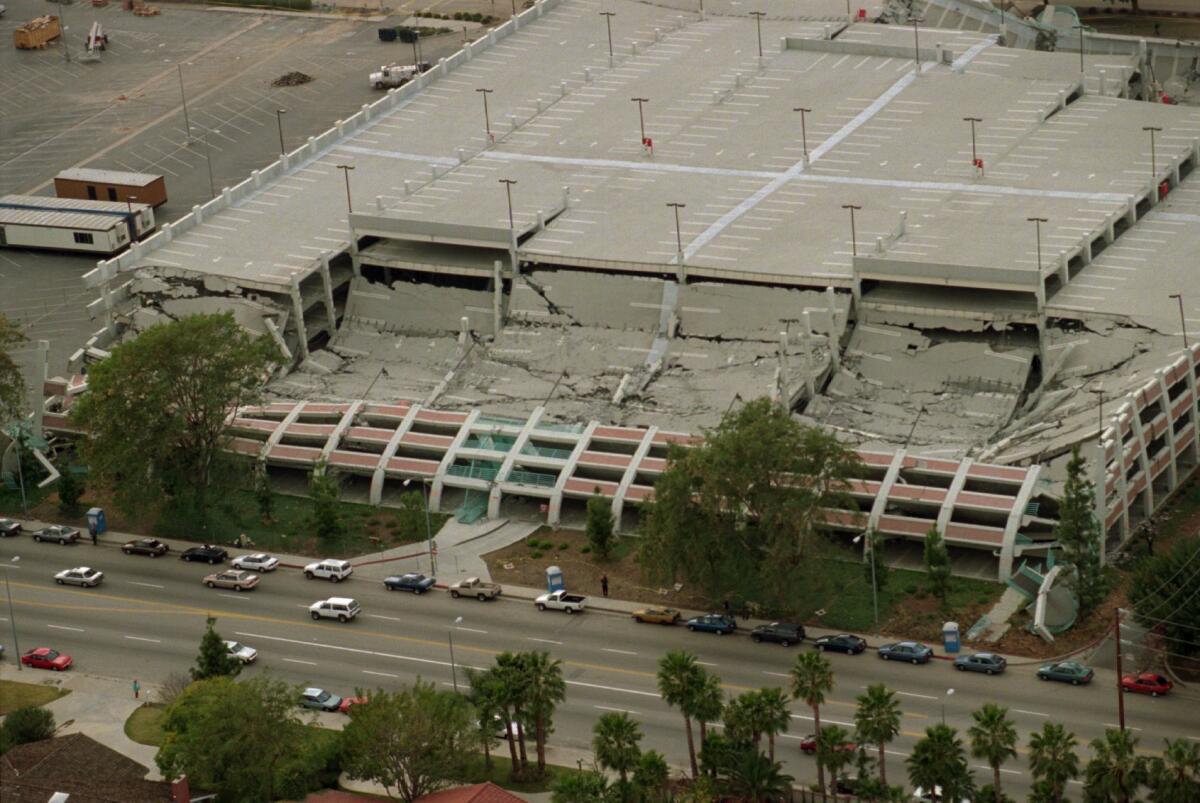Obama proposes $5 million for earthquake early warning system

- Share via
President Obama has proposed spending $5 million in the upcoming federal budget on the West Coast’s earthquake early warning network, which would be a significant boost to the fledgling system if Congress approves the funding.
It is not the full $16.1 million a year needed to get the system up and running in as little as two years. But the backers of the system, Rep. Adam Schiff (D-Burbank) and Sen. Dianne Feinstein (D-Calif.), praised the president’s endorsement as essential for a project that would give cities on the West Coast as much as a minute of warning before shaking from an earthquake arrives.
------------
FOR THE RECORD
An earlier version of this post gave an incorrect year, 2014, for when California lawmakers approved a bill that asks for an early-warning system, directing officials to find money for it. The year was 2013.
------------
The money, penciled in for the budget year that will begin in October, would add onto the $5 million the U.S. Congress already approved for the current fiscal year.
“This has never been part of the president’s budget before,” Schiff said. “It’s significant.”
He said he hoped Obama’s support would prompt private companies as well as the California, Oregon and Washington state governments to financially support the system.
“The federal government is not in a position to build out and support this system on its own. It’s going to require the local buy-in of the West Coast states as well as the private industry that can benefit from this system,” Schiff said. “We’re going to go back to our state counterparts that have been supportive in spirit, but not yet in deed, and see if we can get them to pony up as well.”
More money is needed to buy and install earthquake sensor stations along the West Coast, test the computer software and teach the public what to do when they receive the alert.
To finish the West Coast early warning network, California needs to increase its number of earthquake-detecting sensors from about 400 to 1,120, according to the U.S. Geological Survey and Caltech. To roll out the network in the Pacific Northwest, Oregon and the state of Washington need to increase their number of seismic stations from 224 to 550.
Without the recent congressional funding, scientists would have run out of money by this summer. Scientists at the USGS, Caltech, UC Berkeley and the University of Washington had been using a $6-million grant from the Palo Alto-based Gordon and Betty Moore Foundation to develop the system.
California lawmakers in 2013 approved a bill that asks for an early-warning system, directing officials to find money for it, but prohibits the use of state general fund money.
Schiff said the system is worth the investment. It would save lives, sending alerts to stop elevators at the nearest floor, open fire station doors before they jam, and warn doctors to pause surgeries before the shaking hits.
Early warnings were successfully generated last year after several moderate earthquakes hit Southern California. Scientists testing the system in San Francisco got eight seconds of warning before strong shaking arrived from the 6.0 Napa earthquake in August. The system is already being used by the BART commuter rail system in the Bay Area to slow down trains before a quake hits, reducing the risk of derailment.
“I’m confident once this system is built out, people will recognize the value and it will become a no-brainer,” Schiff said. “But someone has to get the ball rolling and in this case, it’s the Congress and now the administration, and I hope the states will pick up.”
Follow @ronlin and @RosannaXia for more news about seismic safety.
More to Read
Sign up for Essential California
The most important California stories and recommendations in your inbox every morning.
You may occasionally receive promotional content from the Los Angeles Times.












